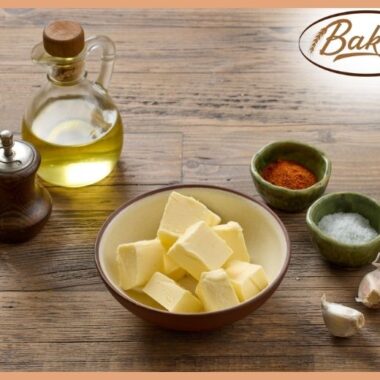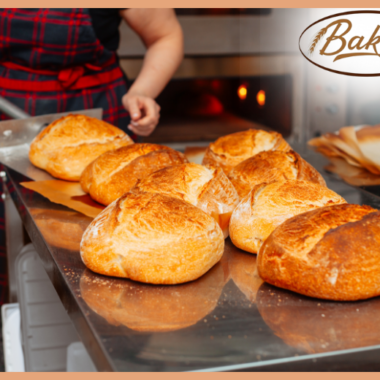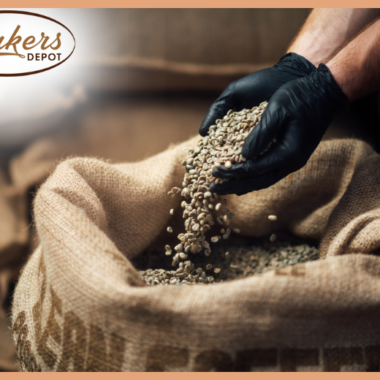Bakers Depot is a food distributor specializing in bakery ingredients and baking supplies. We offer over two thousand exceptional products, ingredients, and services to our customers and same or next-day direct delivery with our fleet of well-equipped trucks. We understand the latest trends in the baking industry and the market in general, and healthy eating has become a priority for many. This helpful article outlines seven healthy types of bread — and Bakers Depot has the ingredients and equipment you need to keep your operation running smoothly and successfully!
The 7 Healthiest Types of Bread
Bread made from whole grains, including whole wheat and sprouted whole grain, typically offers the most nutrients.
Dozens of varieties of bread line store shelves and fill cookbooks, though some are more nutrient-dense than others.
Certain types are naturally high in fiber, vitamins, and minerals. Others are made from refined grains and typically contain added vitamins and minerals.
Naturally, you may wonder what kind of bread is healthiest.
Here are our top 7 choices for wholesome, nutrient-dense breads.

1. Sprouted whole grain
Sprouted bread is made from whole grains that have started to sprout from exposure to heat and moisture.
Sprouting has been shown to increaseTrusted Source the amount and availability of certain nutrients.
This studyTrusted Source showed that sprouting also increasesTrusted Source grains’ antioxidants while decreasingTrusted Source antinutrients, which can in part help to increase metabolism, improve immunity, and substitute for mineral and vitamin deficiency.
What’s more, this process breaks down some of the starch in grains and decreases carb content. That means sprouted, whole grains have a less dramatic effectTrusted Source on blood sugars as much as other grains, and may be a good option to consider for those with diabetes or lower blood sugar targets.
Plus, most sprouted breads are high in fiber and protein. As such, they’re more fillingTrusted Source than more refined breads.
One slice (34 grams) of Ezekiel 4:9 sprouted whole-grain bread offers:
- Calories: 80
- Protein: 4 grams
- Fat: 0.5 grams
- Carbs: 15 grams
- Fiber: 3 grams
2. Sourdough
Sourdough is made through a fermentation processTrusted Source that relies on naturally occurring yeast and bacteria to make the bread rise.
As the fermentation process breaks down some of the carbohydrates and proteins found in grains, it may also be easier to digest than other breads.
This fermentation also helps reduce the number of phytates — also known as phytic acid — that bind to certain minerals and impair their absorption.
While phytates do offer some health benefit, they’re widely known to reduceTrusted Source the amount your body can absorb important minerals, including iron and calcium.
Finally, that fermentation process converts some of the carbs in sourdough bread into what’s known as resistant starch, which takes longer to digest. With that process and how sourdough has a low glycemic index (GI), it’s less likelyTrusted Source to cause a fast spike in blood sugar levels.
Sourdough can be made with both whole-wheat and white flours. Whole wheat sourdough contains more fiber, while sourdough made with enriched white flour may containTrusted Source more iron and B vitamins.
One slice (56 grams) of whole-wheat sourdough givesTrusted Source:
- Calories: 100
- Protein: 4 grams
- Fat: 0.5 grams
- Carbs: 21 grams
- Fiber: 4 grams
3. 100% whole wheat
Whole grains keep the entire grain intact, including the germ, endosperm, and bran. Both the bran and germ are highTrusted Source in fiber, and also contain protein, fat, vitamins, minerals, and beneficial plant compounds; the endosperm is mostly starch.
That’s why whole grains are higher in fiber and considered more nutritious than refined grains, which have been processed to remove the bran and germ.
However, white flourTrusted Source is typically fortified with iron and B vitamins and may actually contain more of certain nutrients than whole wheat flourTrusted Source.
Whole grains have been linked to numerous health benefits, including a decreased risk of type 2 diabetesTrusted Source and heart diseaseTrusted Source.
However, it’s important to note that many manufacturers label breads “whole wheat” so that they appear healthier, even when they mostly consist of refined flour.
Look for breads that have 100% whole-wheat or whole-grain flour listed as their first ingredient and do not sneak unnecessary ingredients, such as large amounts of added sugars or vegetable oils.
One slice (46 grams) of whole-wheat bread containsTrusted Source:
- Calories: 110
- Protein: 4 grams
- Fat: 0.5 grams
- Carbs: 23 grams
- Fiber: 4 grams
4. Oat bread
Oat bread is typically made from a combination of oats, whole-wheat flour, yeast, water, and salt.
Since oats are highly nutritious and linked to a number of health benefits, oat bread can be a healthy choice.
They are highTrusted Source in fiber, which among other things can helpTrusted Source you manage blood sugars after meals. Older researchTrusted Source shows that oat bread may help lower cholesterol and blood pressure, too. Oats contain many beneficial nutrients, including magnesium, vitamin B1 (thiamine), iron, and zinc. All of those play important roles in your body and overall health.
However, just because a bread has “oats” or “oatmeal” on its label doesn’t mean that it contains a high amount of oats. Some oat breads only have a small amount of oats and are mostly made of refined flours, added sugars, and oils.
To find a more nutritious oat bread, look for one that lists oats and whole-wheat flour as the first two ingredients.
One slice (49 grams) of whole-grain oatmeal bread containsTrusted Source:
- Calories: 130
- Protein: 6 grams
- Fat: 1.5 grams
- Carbs: 23 grams
- Fiber: 3 grams
5. Flax bread
Flax bread, which is made primarily from whole-grain flours and flax seeds, is one of the healthiest breads you can eat.
This is because flax seeds are highly nutritious and offer a number of health benefits. Particularly, they are an excellent source of alpha-linolenic acid (ALA), an omega-3 fatty acid found in plant foods that is linked to a lower riskTrusted Source of heart disease.
What’s more, flax seeds boast compounds called lignans that can act as antioxidants in your body and may help protectTrusted Source against certain cancers.
However, more research is needed to understand the connection between flax seeds and cancer risk.
Nevertheless, eating flax bread and other foods with flax seeds may have additional benefits, such as improved digestive healthTrusted Source.
Be sure to look for flax breads made with minimal ingredients, such as whole-wheat and/or sprouted whole-grain flours, yeast, water, salt, and flax seeds.
One slice (34 grams) of Ezekiel Sprouted Whole-Grain Flax Bread contains:
- Calories: 80
- Protein: 5 grams
- Fat: 1 gram
- Carbs: 14 grams
- Fiber: 3 grams
6. 100% sprouted rye bread
Rye closely resembles wheat but is usually darker and denser.
Traditional rye bread is only made from rye flour and does not contain any wheat flour, whereas most modern rye breads are made from a combination of the two. Rye loaves also typically have caraway seeds baked into them.
When compared to wheatTrusted Source breads, ryeTrusted Source is often considered more nutritious. Some research suggests that rye bread may have less of an impactTrusted Source on blood sugar than wheat bread, given its high fiber content and how that slows down your digestion of carbs and generally helpsTrusted Source reduce blood sugar spikes.
The healthiest rye breads are made from 100% whole-grain sprouted rye flour, in addition to other sprouted grain flours. Since sprouting increases grains’ fiber content, sprouted rye is higher in fiber and healthierTrusted Source than non-sprouted rye.
One slice (28 grams) of sprouted rye bread providesTrusted Source:
- Calories: 60
- Protein: 4 grams
- Fat: 1 gram
- Carbs: 12 grams
- Fiber: 3 grams
7. Healthy gluten-free bread
Gluten-free breads are made without gluten-containing grains like wheat, rye, or barley.
They are safe options for people who need to avoid gluten, such as those with celiac disease or gluten sensitivity.
While the exact ingredients in gluten-free loaves depend on the type, they are typically made from a mix of gluten-free flours, such as brown rice, almond, coconut, tapioca, potato, or corn flours.
Many people wrongly assume that gluten-free breads are healthier than those that contain gluten. In fact, most gluten-free varieties are made from refined flours and high in added sugars.
However, those made from almond or coconut flours, such as Barely Bread, tend to beTrusted Source lower in carbs but higher in fiber and protein than loaves made from wheat or other grains.
The higher fiber and protein content in these products may help fill you up more than other breads in a small portion size.
One slice (26 grams) of Barely Bread 100% Grain-Free bread gives youTrusted Source:
- Calories: 90
- Protein: 3 grams
- Fat: 5 grams
- Carbs: 6 grams
- Fiber: 5 grams
How to choose a healthy bread
To choose a nutrient-dense bread, look for brands that have:
- 100% whole-grain or sprouted flours listed as the first ingredient, with limited other ingredients
- 3–5 grams of fiber and 3–6 grams of protein per slice
- low in added sweeteners
One of the best ways to ensure that you’re choosing a healthy bread is to make it yourself. This way, you can control the ingredients. Hundreds of recipes for homemade breads are available online to suit most every dietary need.
Keep in mind that while the breads on this list are healthier than other varieties, a balanced diet should also include a wide variety of nutritious foods.
Fruits, vegetables, legumes, nuts, and seeds, as well as whole grains that have not been milled into flour, typically pack more fiber and beneficial nutrients than bread.
What’s more, many breads are made with added sugars, though the amount can vary depending on the type of bread you choose. The American Heart Association recommendsTrusted Source limiting your added sugar intake to less than 9 teaspoons (36 grams) per day for men and less than 6 teaspoons (25 grams) per day for women.
High intake of added sugar has been linked toTrusted Source chronic inflammation that may lead to illnesses, including heart disease.
As mentioned before, people with diabetes or any form of diabetes may also look to healthier breads to reduce carb counts and help manage their blood sugar levels. Not to mention those who follow low carb eating styles.
That said, bread can be enjoyed in moderation — as part of a balanced diet that includes a variety of other nutritious foods.
Bottom line
Some breads are more nutritious than others.
To choose a beneficial bread, you can look for varieties made from 100% whole-grain and/or sprouted-grain flours. Make sure your bread is low in added sweeteners. A few good options include sourdough, rye, flax, and oat breads.
Whichever you choose, remember to eat bread in moderation as part of a balanced meal plan, alongside a variety of nutritious whole foods.
Bakers Depot services New Jersey, New York, Connecticut, Pennsylvania, Maryland, and Central and South Florida. We are passionate about providing unparalleled customer service and strive to be the best in the industry. Whether you are a family operation or a corporate baking entity, we can accommodate your orders with same or next-day delivery! Get in touch, and discover why people prefer working with Bakers Depot! Call us today at 201.374.8608, browse our website, or email us at Info@bakersusa.com
Reference: [ https://www.healthline.com/nutrition/healthiest-bread ]















